Cold Weather Grilling:
What better way to spice up the winter than with the heat of grilled Jamaican jerk chicken? Cold temperatures and a little snow can present challenges, but you don’t have to let mother nature put your love of grilling on hold. We have expert tips and a recipe that will have you grilling all year long.
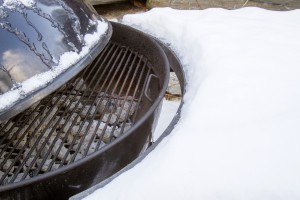
The important tips to keep in mind when smoking meat in cold winter weather also apply to winter grilling. The main difference between bbq and grilling is cooking temperature. BBQ temperatures are low: 200-300°F (93-149°C), while grilling temperatures are quite high: 500-700°F (260-371°C). Maintaining these cooking temperatures in spite of wind, rain, and snow can be quite challenging. Here are the top expert tips we’ve collected:
Top Cold Weather Grilling Tips
Plan Ahead: Grilling in the winter will require more fuel (coal or propane) and time than it does in warmer months. Plan on about 50% more fuel and 20-30% more cooking time.
Hardwood lump charcoal burns hotter than charcoal briquettes and is a good option when you’re working in freezing temperatures.
Clear a path free of snow and ice not just to access your grill, but to stay safe. There’s always a bit of risk involved when you’re grilling outdoors, but slips and falls increase that risk.
When it snows, what do you shovel first? The path to your garage or the path to your grill? —Steven Raichlen, BarbecueBible.com
Bundle up: Be sure you’re warm enough to spend some time outside in freezing temperatures but don’t wear any loose clothing that could possibly catch fire. Wear your heat-resistant grilling gloves for cooking, not your ski gloves—they’ll be ruined.
Shield your grill from wind and precipitation. Rain and snow that fall on your grill quickly wick away heat through evaporative cooling. The more your grill’s temperature is cooled down by wind and precipitation, the more fuel you will use.
Shield your grill or smoker from the wind and and precipitation. Metal is a good conductor and the weather will tend to cool it down. It’s especially important to keep the air intake out of the winid to maintain a consistent burn. —John Dawson, Pit Barrel Cooker
Mise en Place (French for “everything in its place”): Have everything prepped ahead of time to minimize your time outdoors. Have your meat, tongs, thermometer, foil for wrapping, warm platter, or anything else you might need ready to go so you don’t have to open the lid multiple times or run back inside to grab something you forgot.
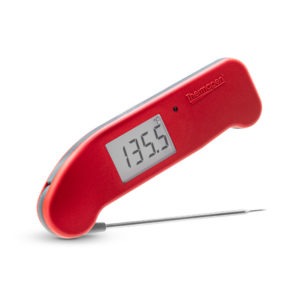
Be sure the cooking area is well lit. Days are shorter in the winter so you may be working in the dark if you’re grilling for dinner. Use your porch lights, have a flashlight handy, and use a Thermapen® Mk4. The Thermapen has an automatic backlight to make its already easy-to-read digits easily visible in the dark.
Keep the Lid Closed. Every time you open your grill’s lid cold air can rush inside, cooling down your grill and slowing cooking time.
The best way to keep temperatures up when grilling outdoors during the colder months is to keep the lid on the grill as much as possible, opening it only once to flip your chicken, burgers or steak as needed. —Winter Grilling Tips, Grillocracy.com
Cook to temperature. Estimated cooking times in recipes will not be the same when you’re grilling in the winter. The only way to know if your meat is done cooking is by taking accurate temperatures. Use an accurate Super-Fast® thermometer you can trust.
➤ Use an instant-read thermometer. The high temperatures of grilling exceed what an alarm thermometer’s probe cable can handle. The best temperature tool for high heat cooking applications is an instant-read. Read our article The Difference Between BBQ and Grilling for more information on the important temperature differences.
Keep your food warm. Once the food is done you’ll want to keep it warm on its way indoors. Cast iron retains heat extremely well. Heat up a cast iron skillet or dutch oven to transport your grilled food from the grill indoors. Keep the cast iron on your grill while cooking if you have room. It’ll make bringing the food inside easier. If you don’t have room on the grill you can warm it up in your oven.
Tips for Cooking with Gas Grills in Cold weather
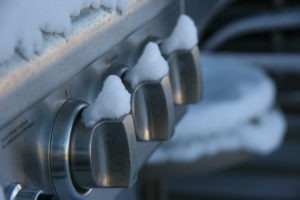
Grill Check: If using a gas grill, perform a quick grill check. Check to see if there are any leaking cracks in the hoses, if there are, replace them. Check to see if the lid or any knobs are frozen. If they are you can use a hairdryer to gently melt the ice. Don’t force anything to turn or open.
Fuel Tank Pressure: As the temperature outside decreases so does the pressure in your fuel tank. A partially full tank may not have adequate pressure to keep the grill lit.
Choose Simple Recipes
Use recipes that call for just a single flip. Less fiddling with the food makes for happier winter grilling. —Danielle Bennet, DivaQ
We’re using a straightforward grilled chicken recipe that only needs one flip. I
There’s something extra satisfying about braving sub-freezing temperatures to cook outdoors. Keep these tips handy and be confident with your grilling projects 365 days a year!
Products Used:
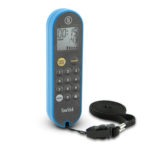


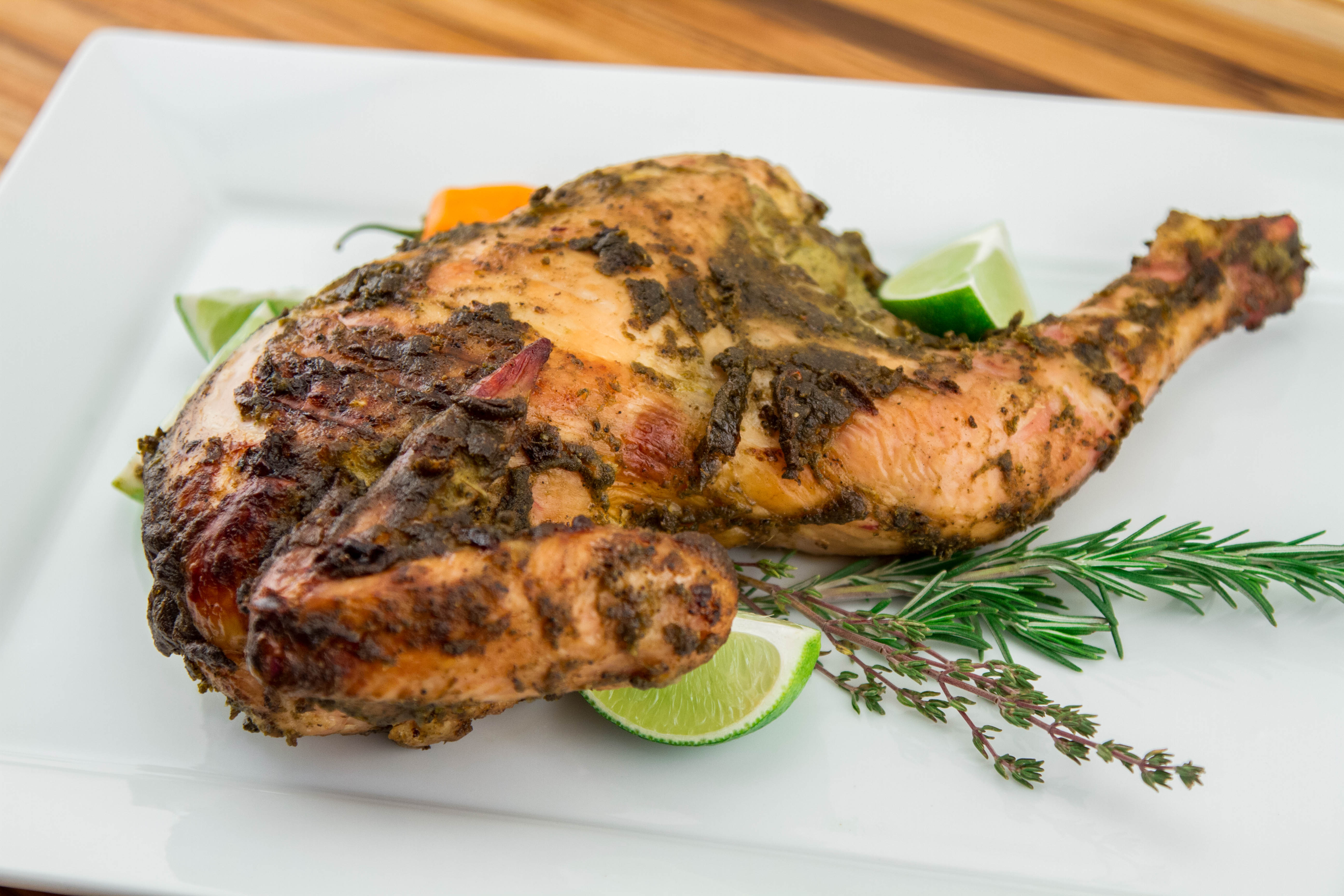
Looks good. A couple questions though. Recipe says 1 chicken. Pics show two in the marinade pot and on the grill. So did you double the marinade for 2 chickens or does the marinade make enough for two?
Second you don’t mention any target grill temp. You grilling at 400 or 500 or?
Thanks very much. Looking forward to trying!
Robert,
Yes, we doubled the marinade recipe and used two chickens. And the target grill temp is indeed 400-500°F. Let us know how your cook goes!
Thanks,
-Kim
This Jamaican Jerk Chicken recipe sounds great, and it is quite detailed, but what is the target temperature for the grill / smoker? I assume it’s moderate based on the suggested cooking time, but it would be nice to know.
Mark,
The target grill temperature is about 400-500°F.
Thanks,
-Kim
why would anyone cook poultry in halves mixing white and dark meat since the magic number is 20 minutes. starting dark meat 20 minutes ahead of the white meat will insure that they are done the same time and not with dry white meat and/or underdone dark meat. since you have them halved anyway, why not just make another cut between the white and dark sides. Half a chicken is to much meat for one person’s portion size. if you nave hungry people they can take two perfectly cooked pieces instead of one substandard cooked piece. My understanding is that the sone temperature is different for white and dark meat by about 10-15 degrees. Do the 20 minute trick and you will have this difference.
Kevin,
Yes, very true. You want to pull the legs (dark meat) at about 175°F while the white meat’s final resting temperature shouldn’t exceed 165°F. The main reason why we left our chickens halved was for aesthetic purposes.
Thanks,
-Kim
Doesn’t chicken need to be cooked to 165F in order to kill bacteria?
Richard,
We pulled our chicken at 155-157°F to account for carryover cooking after being pulled from the grill. Also, check out the USDA’s time and temperature chart for poultry pasteurization. At 155°F the chicken only needs to be held at that temperature for 54.4 seconds to reach the same pathogen reduction as is achieved instantaneously at 165°F.
Thanks!
-Kim
Recipe looks outstanding. How long do you recommend leaving the chicken in the marinade?
Cliff,
You can leave the chicken in the marinade for about 30 minutes to an hour.
Thanks,
-Kim
I just made this , this evening. It’s excellent just as written. Thanks
Tim,
So glad to hear it turned out well for you! It’s a delicious recipe.
Thanks,
-Kim
The recipe vanished! What happened?
The recipe will be returning very soon in its own blog post—we Thought that the jerk chicken recipe deserved its own spot. Sorry for the inconvenience!